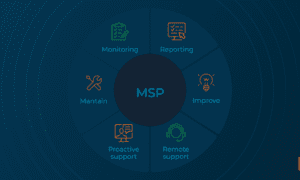In an age where the internet has erased borders and enabled instant connections, time zones remain a critical part of daily life. Whether for business, travel, education, or personal relationships, understanding how time zones work—and why they matter—is essential to effective global communication.
The Basics of Time Zones
Time zones are regions on Earth that observe the same standard time. They were introduced to help organize and synchronize activities across different geographical locations, particularly during the expansion of railways and international trade in the 19th century.
Each time zone is generally one hour ahead or behind its neighboring zone, based on the Earth’s 24-hour rotation. The Coordinated Universal Time (UTC) serves as the primary reference point. All local times are defined as a specific offset from UTC (e.g., UTC+5, UTC-8, etc.).
This system ensures that the same activities—like work, school, or sleep—occur during similar parts of the day for people in different regions, even if they’re thousands of kilometers apart.
The Importance of Time Zones in Global Operations
In global business environments, time zones influence everything from internal team meetings to customer support responses. For instance, a software company based in London may have developers in Canada and clients in California. To coordinate effectively, all parties need a clear understanding of when each person is available.
Knowing the current time in Los Angeles is especially useful when scheduling meetings or deliveries involving the Pacific Time Zone (PT). Delays or miscommunications resulting from poor time zone planning can lead to missed opportunities or client dissatisfaction.
Practical Implications for Businesses
Companies with international operations often employ multiple strategies to manage time zone differences. These may include rotating shift schedules, asynchronous communication tools, or 24/7 customer service support.
Time-aware scheduling tools and calendar integrations help streamline this process. Still, manual checks remain essential, especially during periods of Daylight Saving Time (DST), when certain regions adjust their clocks by an hour, creating temporary differences.
For example, while DST might shift the local clock in California, countries like the United Kingdom or Australia do not observe it. This can temporarily alter the time gap and needs to be taken into account when referencing the time in the United States or any specific state.
Travel, Time Zones, and Jet Lag
Travelers crossing multiple time zones often experience jet lag, a temporary sleep disorder that results from the body’s internal clock being out of sync with the local time. This is common on long-haul flights, especially those moving east or west across several time zones.
Understanding the destination’s local time beforehand can ease the transition. For example, travelers heading to California from Europe or Asia usually check the current time in Los Angeles to plan sleep, meals, and activities around their arrival.
Business travelers, in particular, rely heavily on time zone knowledge to ensure they arrive prepared for meetings, presentations, or events.
Remote Work and Freelancing Across Time Zones
The rise of remote work has made time zone awareness even more critical. Freelancers, virtual assistants, software developers, and marketing teams now commonly collaborate across continents.
Many companies hire talent based on skills rather than location, which creates a workforce spread across various time zones. While this can offer flexibility and diversity, it also requires high-level coordination.
Freelancers working with U.S.-based clients, for instance, must often adjust their schedules … even if they reside in the United Kingdom or Australia. This may mean working during late-night or early-morning hours in their own country to meet client expectations.
Global Events and Broadcasting
Live sports events, webinars, global conferences, and major news announcements are often scheduled with time zones in mind. Organizers usually provide event times in multiple zones or rely on UTC as a universal reference.
A common approach is to promote events in major time zones like Eastern Time (ET), Pacific Time (PT), and Greenwich Mean Time (GMT), encouraging audiences to convert to their local time. This avoids confusion and maximizes attendance and engagement.
Even social media algorithms may be affected by timing. Posting content at the right hour—based on when your audience is most active—can impact reach and visibility. For creators and marketers targeting U.S. audiences, being aware of the current time in Los Angeles or New York is key to optimizing engagement.
Time Zones in Technology and Automation
Most operating systems, websites, and mobile apps now feature automatic time zone detection. This allows systems to adjust timestamps for emails, notifications, and appointments based on the user’s location.
However, automation is not always foolproof. Developers still need to be careful when programming features that depend on local time, such as booking systems, reminders, or event countdowns.
Incorrect handling of time zones can result in bugs, missed deadlines, or confused users. Testing across different zones and accounting for changes like DST is a best practice in global software development.
Educational Systems and Online Learning
Virtual classrooms and online courses attract students from all over the world. Institutions must therefore consider time zone differences when scheduling live lectures or exams.
Instructors might choose to pre-record sessions or offer multiple time slots. Learners, on the other hand, often convert the original class time to their time zone manually to avoid missing sessions.
Being aware of the time in the United States is especially important for students enrolled in U.S.-based programs or universities offering live support and tutoring.
Final Thoughts
Time zones may seem like a technical detail, but they are an essential part of life in a globally connected world. Whether you’re running a business, traveling abroad, studying online, or collaborating with an international team, understanding and respecting time differences leads to better communication, fewer mistakes, and improved outcomes.
From checking the current time in Los Angeles before a Zoom call to staying updated on the time in the United States for a product launch, time awareness has become a quiet but powerful tool for success in modern life.
Frequently Asked Questions
What is the purpose of time zones?
Time zones allow different parts of the world to maintain consistent daily routines based on sunlight. Without them, scheduling across regions would be chaotic.
How many time zones are there in the world?
There are 24 standard time zones, but due to variations like half-hour offsets and Daylight Saving Time, the actual number in use is slightly higher.
Why is it important to check the current time in Los Angeles?
Los Angeles is part of the Pacific Time Zone (PT). Knowing the current time in Los Angeles helps businesses, travelers, and remote teams align their schedules with the West Coast of the United States.































